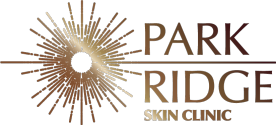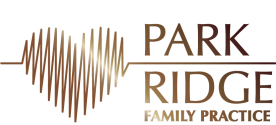Chemical Peels
What does it do?
Chemical peels are used to treat specific concerns. Whether it’s for Acne and the associated oiliness and congestion or dehydrated fragile skins showing fine lines and wrinkles, or skin that’s become lackluster and sluggish due to ageing, we have specially compounded peels to target each individual’s needs.
Depending on the clients skin, peel application and processing times are customised during each visit to help you achieve the desired results, making peels a highly effective modality in both skincare and skin correction.
This treatment is also used in conjunction with microdermabrasion when rapid results are required.
The results provide accelerated skin regeneration, smoother texture, less congestion and blackheads, diminished lines and wrinkles.
A chemical peel acts on the skin to denature a very fine film of the skins surface. How each of the peels works is dependent on it’s chemical structure.
Generally fair skinned people are the best candidates for chemical peels. The procedure is not recommended for individuals with infections, active skin disease, cut or broken skin, sunburns or active Herpes simplex 1 sores. Other counter-indications include patients who are:
Allergic to Aspirin or salicylic (for Jessner Peel only)
Nursing or pregnant.
Have taken Roaccutane in last six months.
Have psoriasis, eczema, dermatitis or rosacea in the treatment area
Have used Retrieve , Stieva-A , bleaching or skin-lightening creams or acid-based products within 48hours of treatment
If you are currently using prescription medication for acne (Roaccutane™, Accutane™, Oratane™) it is best to wait at least 6 months after taking your last dose. This is due to the thinning effects these drugs can have on the skin all over the body.
Your skin will have some degree of shedding and/or peeling post treatment. This normally begins on the second day and some people prefer to set aside a few days where they won’t have any social engagements to attend after treatment.
You must be sun compliant after a chemical peel. The skins ability to protect you from UVA/UVB rays is diminished for a short time afterward. A hat, sunglasses and a minimum SPF30+ sunscreen must be applied for the next 2 weeks whenever outdoors.
All products containing active ingredients (glycolic /AHA scrubs and washes, VitA, VitC etc) must not be used for a minimum of 4 days following most peels.
Call Park Ridge Skin Clinic if you would like to book a consultation or if you have any questions.
What happens during the treatment?
Your skin is double cleansed and all traces of surface oils are removed. Depending on the type of peel being used, it will be applied to the skin with either a small fan brush or a gauze pad. The therapist stays in constant communication with you asking for your feedback on how your skin is feeling. A small electric fan is always on hand if you require a cooling sensation at any stage. Post treatment products are applied and post treatment care is discussed. A brochure is given to you to take home. A great peel to start with is the Lactic Peel, having a larger molecule than glycolic or salicylic acid, it tends to be less irritating while still having a regenerative effect on the skin.
What does it feel like?
Clients report sensations from a mild tingle (glycolic and lactic peels) to a moderate heat (Jessner and Trichloracetic Peels) during initial application, however these sensations have usually subsided within minutes of application.
Your therapist will be continually assessing your comfort level throughout the treatment.
What happens after the peel?
The skin will initially feel tight, be a little red and feel warm. In the days after the treatment the skin may become rough and flaky. It is importannt not to stratch or pick the peeling skin as this can cause scarring. The skin should be kept well hydrated applying moisturiser as necessary and daily use of a minimum SPF 30+ sunscreen should be applied for a minimum of 2 weeks after treatment.
Is there any downtime?
The skin will be red on the day of the peel, and depending on the strength and type of peel you may experience anything from a slight roughness through to the skin shedding. Some clients prefer to have their treatment on a Thursday, knowing that the first signs of peeling will not occur until the weekend.
Makeup can be applied the following day if desired.
How often should I have a chemical peel?
We use pharmacy compunded medical grade peels and recommend treatments no sooner than 1 month apart to allow the skin to regenerate through at least one cell cycle turnover. Chemical peels just like microdermabrasion are a good treatment to kickstart your skincare routine, and thereafter your prescribed home care products from Environ (TM) will maintain your skin in peak condition
We want you to get the best from your in-clinic treatments -your skin needs to be prepared and your cell turnover enhanced ready for the peel process. Preparing your skin with the use of active products from Environ (TM) for 2 weeks prior to your first treatment will provide the best outcome with safe and predictable results.

